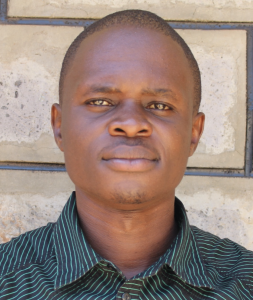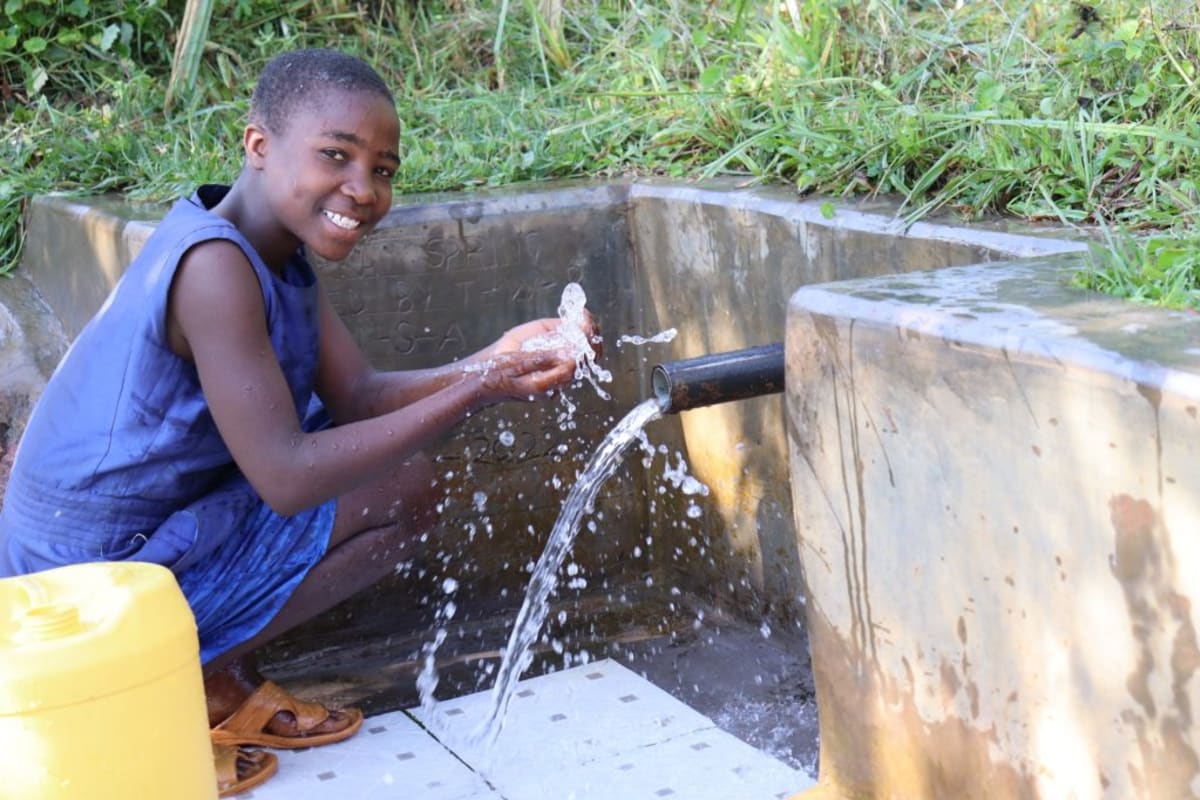Abuyeka Spring which is unprotected, is the primary water source for the 240 community members of Indulusia. The only other source is rainwater collected during the short rainy season.
Community members gather at the spring to fetch their needed water every morning and evening. The spring becomes overcrowded, and this means only those who are patient will collect water while those who are impatient will go home carrying empty jerrycans. During the drought season, overcrowding worsens when people from nearby villages also collect water because their spring runs dry.
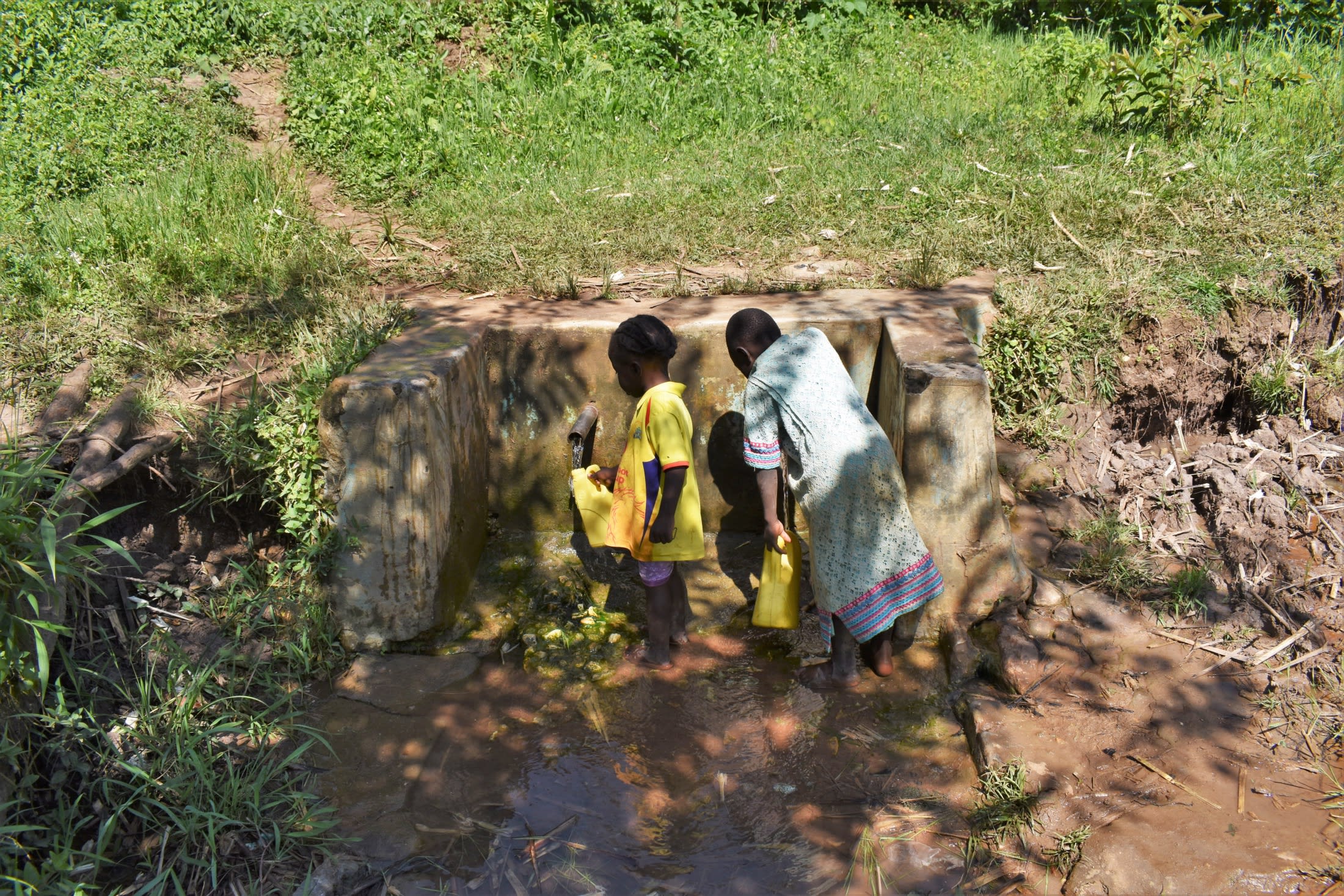
The spring has several other issues making it need protection. Water is oozing from the surface, and only a small amount of water flows through the discharge pipe. The drainage system is damaged, causing water to stagnate at the collection point. And former stairs have crumbled, making accessibility a challenge.
These compromises to the spring's integrity mean the water collected can not be trusted and is unsafe for human consumption. Protection of the spring will allow community members to collect clean, safe water.
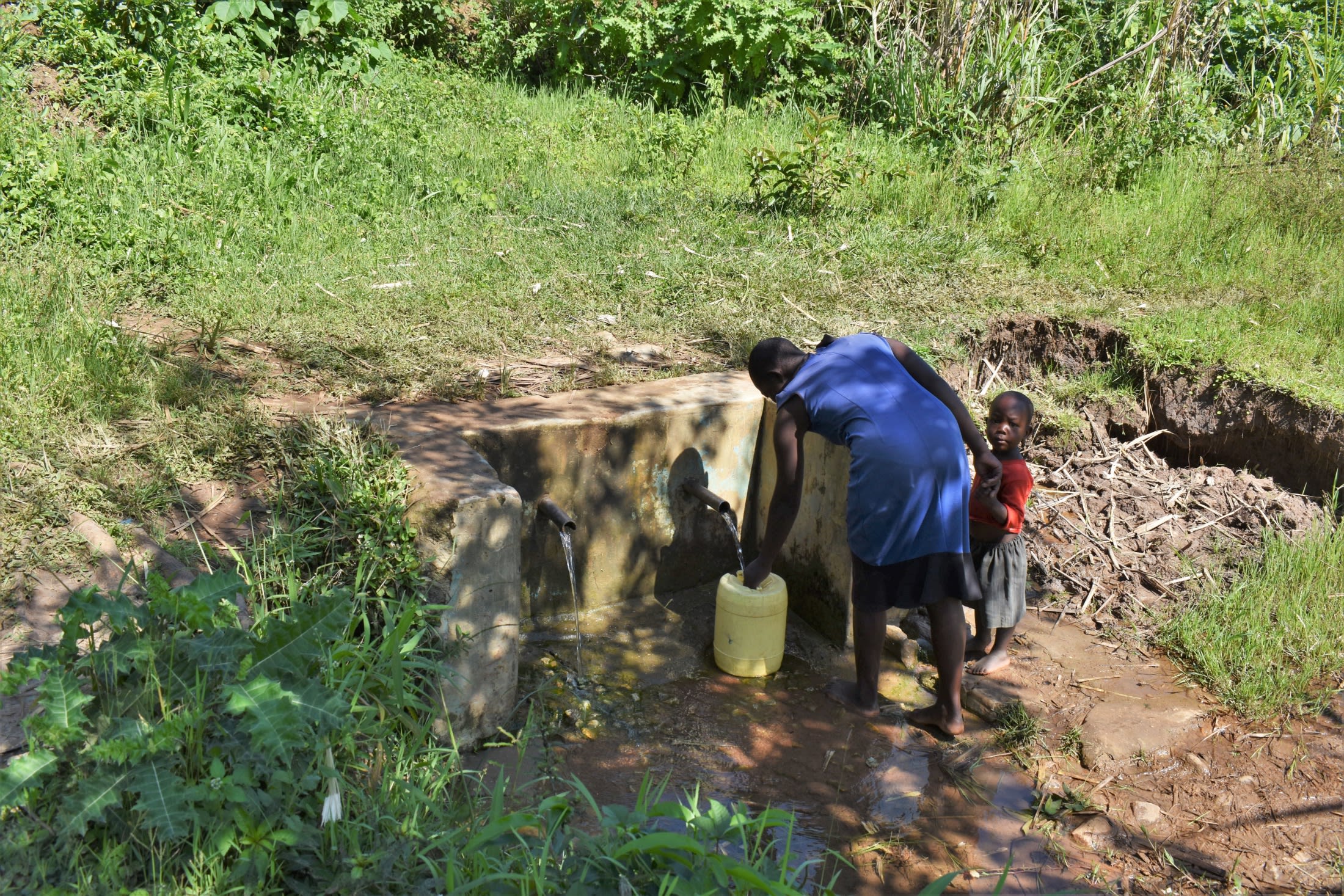
Valentine A., 16, (in the photo above) shared her thoughts, "My personal health is always compromised in times when water is scarce. On various occasions [I] am forced to put on dirty clothes or even sleep without taking a bath."
Alfred Werenalo (in the photo below), a local farmer, commented, "Low discharge has always led to people overcrowding at the water point, especially during the drought season as people come from afar to access the water. During this time, we are not able to get enough water for use in my home, allowing some functions not to be attended to."
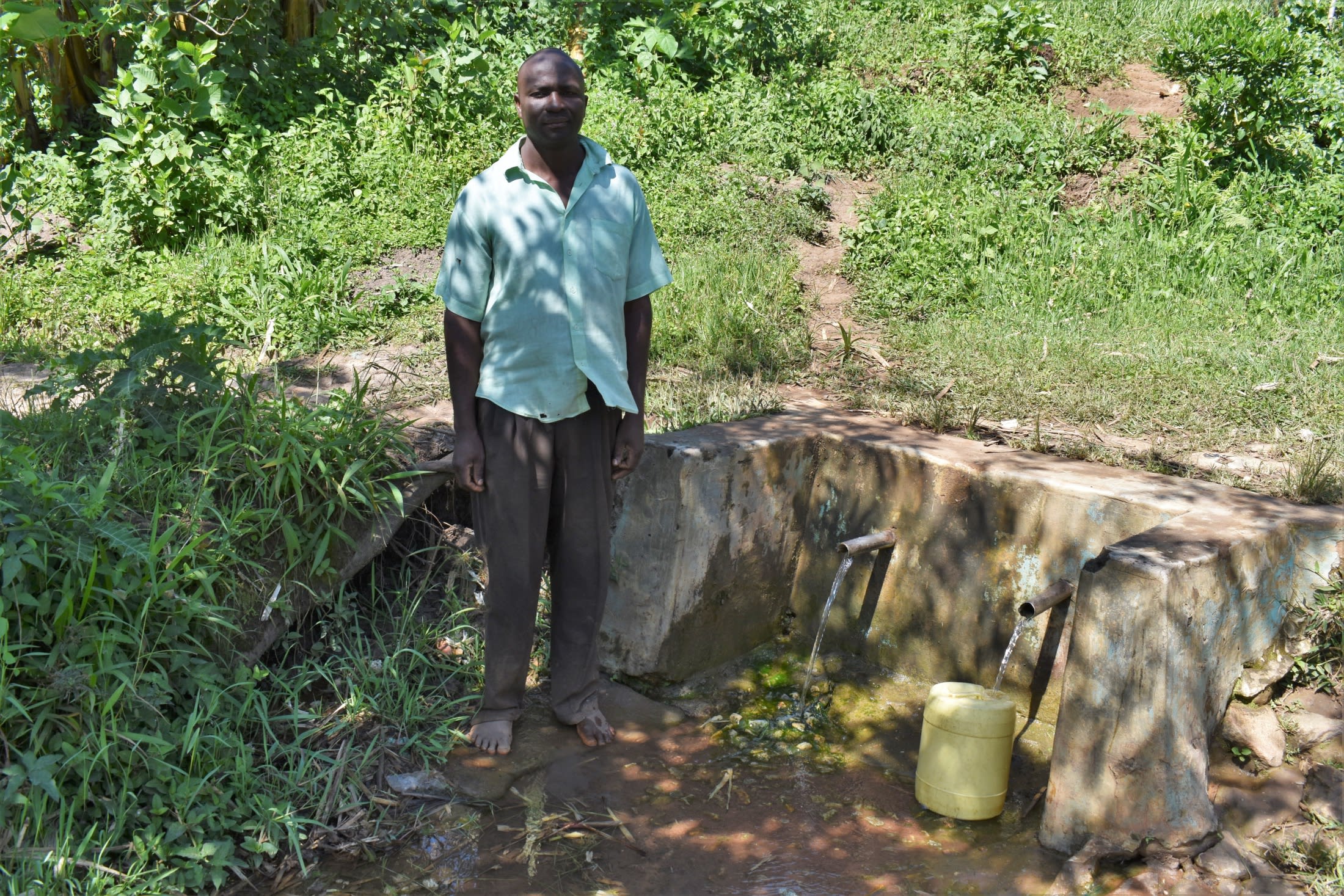
We will carry out hygiene and sanitation training once the spring has been protected and provide a reliable, sufficient water source so residents who are still lagging in good hygiene and sanitation standards can improve.
What We Can Do:
Spring Protection
Protecting the spring will help provide access to cleaner and safer water and reduce the time people have to spend to fetch it. Construction will keep surface runoff and other contaminants out of the water. With the community's high involvement in the process, there should be a good sense of responsibility and ownership for the new clean water source.
Fetching water is a task predominantly carried out by women and young girls. Protecting the spring and offering training and support will, therefore, help empower the female members of the community by freeing up more of their time and energy to engage and invest in income-generating activities and their education.
Training on Health, Hygiene, COVID-19, and More
To hold trainings during the pandemic, we work closely with both community leaders and the local government to approve small groups to attend training. We ask community leaders to invite a select yet representative group of people to attend training who will then act as ambassadors to the rest of the community to share what they learn. We also communicate our expectations of physical distancing and wearing masks for all who choose to attend.
The training will focus on improved hygiene, health, and sanitation habits in this community. We will also have a dedicated session on COVID-19 symptoms, transmission routes, and prevention best practices.
With the community's input, we will identify key leverage points where they can alter their practices at the personal, household, and community levels to affect change. This training will help to ensure participants have the knowledge they need about healthy practices and their importance to make the most of their water point as soon as water is flowing.
Our team of facilitators will use a variety of methods to train community members. Some of these methods include participatory hygiene and sanitation transformation, asset-based community development, group discussions, handouts, and demonstrations at the spring.
One of the most important issues we plan to cover is the handling, storage, and treatment of water. Having a clean water source will be extremely helpful, but it is useless if water gets contaminated by the time it is consumed. We and the community strongly believe that all of these components will work together to improve living standards here, which will help to unlock the potential for these community members to live better, healthier lives.
We will then conduct a small series of follow-up trainings before transitioning to our regularly scheduled support visits throughout the year.
Training will result in the formation of a water user committee, elected by their peers, that will oversee the operations and maintenance of the spring. The committee will enforce proper behavior around the spring and delegate tasks that will help preserve the site, such as building a fence and digging proper drainage channels. The fence will keep out destructive animals and unwanted waste, and the drainage will keep the area's mosquito population at a minimum.

 Protected Spring
Protected Spring
 Rehabilitation Project
Rehabilitation Project










